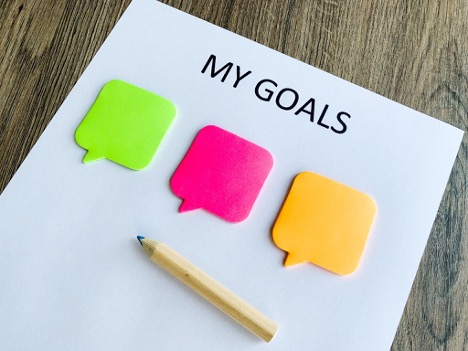Productivity is the key to success in the modern business environment — but also its greatest challenge. The energy, focus, and time required for work are often consumed by various distractions. Whether we’re in an office, a factory, or working from home, small distractions can turn into serious obstacles, slowing our progress toward our goals. Although most of these distractions are easy to recognize, it’s even more important to learn how to get rid of them.
In this article, we uncover the most common workplace distractions, how to eliminate them and ensure top focus for your employees.
Digital Distractions – The Number One Enemy of Concentration
The digital world bombards us with content and hijacks our attention with just one click. You open an email to reply to a message and, two hours later, realize you’ve scrolled through three social networks, watched several YouTube videos, and read ten articles.
Although we believe we control technology, the truth is quite the opposite — technology controls us.
The biggest digital distractions at work include:
- Email – Constantly checking emails, even when it’s not urgent, creates a compulsion to respond instantly.
- Text messages and social media notifications – Every ping feels like a top priority.
- Too many open tabs and apps – Excess content sabotages productivity.
- Digital multitasking – Constantly switching tasks exhausts the brain.
Fighting digital distractions is harder than it seems. The first step is setting clear boundaries.
Start by turning off unnecessary notifications and schedule digital breaks during your workday. Furthermore, instead of reacting impulsively, plan specific times to check messages and emails — for example, in the morning, before lunch, and at the end of the workday.
This is a simple, yet effective way to build a more productive workday and create a healthier digital routine.
Noise and Environmental Distractions
A noisy work environment can dramatically impact our focus. This doesn’t apply only to open offices or factories — even working from home or a quiet café can be brimming with distractions.
While you’re trying to focus on an important task, you might hear colleagues chatting, music playing, the hum of air conditioning, or the constant phone ringing. Each time you find your focus, someone interrupts you with a comment or question in passing.
Even seemingly harmless sounds like keyboard typing, mouse-clicking, or a squeaky chair, if repeated, can disrupt your train of thought.
What can you do to reduce environmental distractions?
- Set clear boundaries – If you’re in a shared space, let colleagues know when you need uninterrupted time.
- Use noise-canceling headphones – Even without music, good headphones can help block out background noise.
- Organize your workspace – A minimalist desk and good lighting reduce visual clutter.
- Working from home – Create a focused work corner and inform household members when you’re working.
The goal is to create conditions that energize rather than drain you.
Poor Time Management – Task Overload and Unrealistic Expectations
Tasks pile up every day, and we don’t know where to start. Often, instead of taking action, we become paralyzed. The problem isn’t always a lack of concentration, but that we’ve bitten more than we can chew.
While multitasking is often seen as a skill. However, in the long run, it reduces the quality of work and usually prolongs task completion. In addition to that, working under pressure, tight deadlines, and excessive expectations all lead to chronic fatigue and anxiety among employees.
How can one cope with poor task organization?
- Set priorities – Learn to distinguish between urgent and important. Use tools like the Eisenhower Matrix.
- Break large tasks into smaller steps – Each small step brings you closer to the goal.
- Learn to say NO – Setting boundaries is essential for long-term efficiency.
- Communicate clearly with supervisors – When expectations are too high, an honest conversation can make a world of difference.
It’s important not to take criticism to heart and think you’re lazy or incapable, for company systems can sometimes overlook human limits.
Internal Distractions – Mental Fatigue and Emotional Exhaustion
Some of the most powerful distractions come from within. Worry, guilt, perfectionism, lack of motivation, burnout, self-doubt, and inner criticism are strong saboteurs of focus.
Even when we try to concentrate on work, our thoughts tend to wander. Worrisome questions occupy our mind: “Am I good enough for this project?”, “Did I send that email?”, “What if I make a mistake?” This kind of mental noise causes emotional fatigue and prevents us from getting into a productive workflow. Emotional exhaustion directly affects the quality and efficiency of our work.
How to recognize and silence internal distractions
- Identify and name your thoughts – When your mind wanders off or gets caught in negative dialogue, label the thought: “worry,” “planning,” and “criticism.” This brings awareness and helps you return to the task.
- Take short mental resets – Close your eyes, breathe deeply for a few minutes, and focus solely on your breath. This grounds you in the present moment and quiets mental noise.
- Keep a thought journal – Writing down your thoughts often relieves mental pressure.
- Set small, realistic goals – When motivation is low, break tasks into tiny steps. One small step can reignite focus.
- Work in cycles – Techniques like the Pomodoro method (25 minutes work + 5 minutes break) help maintain mental stamina.
How to Regain Control and Eliminate Distractions
Completely avoiding distractions isn’t realistic — nor is it the key to overcoming them. The secret lies in creating an environment that encourages focus, inner peace, and higher productivity.
Start with small but effective changes:
- Turn off unnecessary notifications – Social media apps and emails don’t need to ping every five minutes.
- Set a rule: “No phone during work” – Keep your phone away from your desk during focused tasks.
- Use interval work techniques – The 25/5 method helps maintain concentration.
- Start your day with a clear priority list – Know what must be done today.
- Organize your workspace physically and digitally – A clean space means a clear mind.
- Take short, regular breaks – A quick walk, stretching, or mindful breathing works wonders.
- Let coworkers know you don’t want to be disturbed – Set a chat status or say it clearly.
- Use headphones or focus sounds – Ambient sounds can help block out external noise.
- Schedule email and message checks – For example, in the morning, before lunch, and at the end of the day.
- Practice saying “no” when needed – Every extra task without priority is a potential distraction.
Regaining control doesn’t happen overnight, but consistent habits make a huge difference. When your attention isn’t drained by constant distractions, you will finally be able to reach your full potential, workdays will become less stressful and the results will get better and better.
Support your team’s mental well-being with SupportRoom – you’ll easily educate employees on how to optimize their work time and eliminate top distractions for a healthier and more productive workday.






